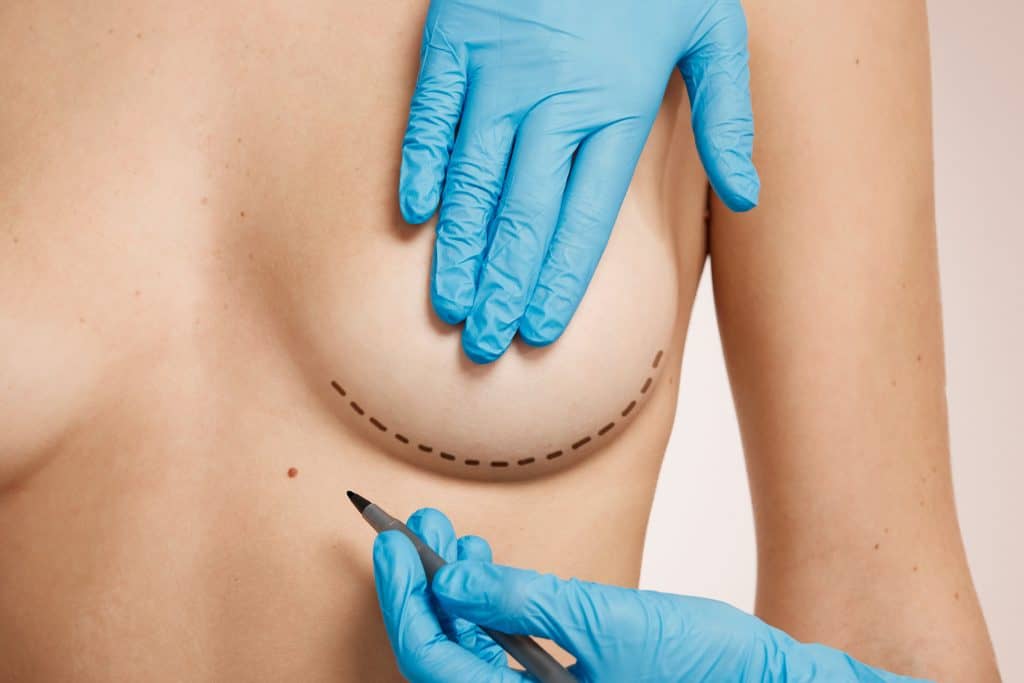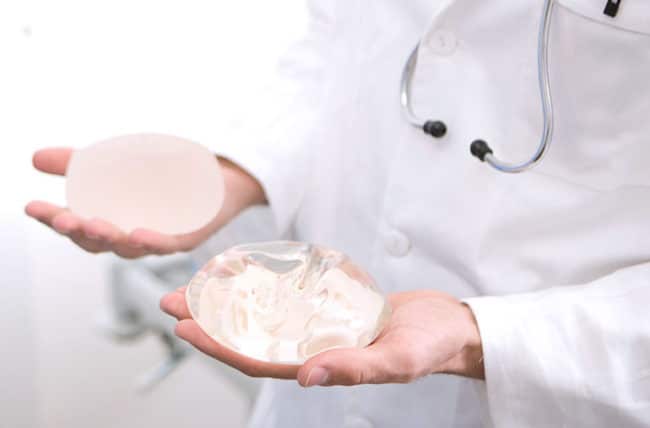Debunking Fears Surrounding Breast Implant Removal
Deciding on breast implant removal is a significant step for many, driven by various personal and health reasons. This process not only involves the surgical removal of implants but also addresses concerns related to aesthetics, comfort, and well-being. As individuals seek information on this procedure, understanding the intricacies becomes crucial. From evaluating reasons for removal to post-surgery care, gaining comprehensive insights ensures informed decision-making. This blog aims to shed light on essential aspects of breast implant removal, guiding those contemplating this choice towards making decisions that align with their health goals and lifestyle preferences.
Understanding Breast Implant Removal Surgery
Surgical Overview
Breast implant removal surgery is a procedure to take out implants from the breast. This might be due to complications, lifestyle changes, or personal choice. The surgeon makes an incision and carefully removes the implant.
The process can vary in complexity. It depends on factors like the type of implants and any scar tissue present. Recovery time varies too but usually involves rest and limited movement.
Techniques Used
Several techniques exist for removing breast implants. Each method caters to specific situations.
- En Bloc Capsulectomy: This involves removing the implant and surrounding capsule as one unit.
- Total Capsulectomy: Here, the implant is removed first, followed by the capsule.
These methods aim to minimize risk and ensure all foreign material is out. Surgeons decide based on your health and surgical history.
Choosing a Surgeon
Selecting a qualified surgeon for breast implant removal is crucial. Experience matters greatly in achieving desired outcomes safely.
Look for:
- Board certification
- Specialization in breast surgeries
- Positive patient testimonials
Questions to ask include their experience with your type of implants and preferred technique. A good surgeon will discuss risks openly with you.
Reasons for Breast Implant Removal
Health Concerns
Breast implant removal is often considered due to health issues. One common reason is implant rupture or leakage. This can lead to pain, swelling, and changes in breast shape. It’s crucial for individuals to monitor their implants’ condition.
Another concern involves the body reacting negatively to the implants. Some people might experience an immune system response that causes discomfort and health problems. Early detection of these issues ensures better outcomes after removal.
Personal Preference
Changes in personal preference play a significant role in deciding on breast implant removal. Over time, one’s desired breast size or shape may change due to lifestyle adjustments or aging. This shift often leads individuals to reconsider their previous cosmetic decisions.
Moreover, societal trends and personal circumstances influence these preferences significantly. A move towards natural beauty standards has seen some opting for implant removal as part of embracing their natural selves.
Physical Discomfort
Physical discomfort or pain is another critical factor leading to the decision of removing breast implants. The weight and pressure of implants can cause neck, back, and shoulder pain over time.
Activities like sports or exercise might become challenging with large implants, prompting some women to seek relief through surgery.
- Running becomes difficult.
- Certain exercises feel uncomfortable.
Breast Implant Removal Surgery Pain and Discomfort
Immediate Pain
Immediately after breast implant removal surgery, patients can expect some level of pain. This discomfort is a normal part of the healing process. The intensity varies among individuals but is generally manageable.
Pain management techniques are crucial during this period. Doctors often prescribe medication to alleviate discomfort. It’s important for patients to follow their doctor’s advice closely.
Pain Comparison
The pain experienced after removing breast implants often differs from the insertion process. Many find that removal results in less discomfort than the initial surgery.
This variance in pain levels can be attributed to several factors, including the body’s adaptation over time and surgical technique differences.
Management Strategies
Effective post-surgery strategies are vital for managing pain and ensuring a smooth recovery. Here are some recommended approaches:
- Medication: Follow your doctor’s prescription carefully.
- Compression Garment: Wearing a compression bra helps reduce swelling and supports healing.
- Rest: Adequate rest aids in faster recovery.
Patients should communicate any concerns about pain or discomfort with their healthcare provider immediately. Ignoring symptoms can lead to complications.
Recovery Process After Breast Implant Removal
Typical Timeline
The recovery time varies from person to person. Most patients can return to normal activities within a week. Full recovery, however, may take several weeks.
Rest is crucial in the first few days post-surgery. Avoid heavy lifting and strenuous exercise for at least four to six weeks. This helps prevent complications and promotes healing.
Care Instructions
Proper care of incision sites is essential for a smooth healing process. Keep the area clean and dry. Follow your surgeon’s instructions on wound care closely.
You might need to wear a special support garment. This reduces swelling and supports the breast tissue during healing.
Follow-Up Appointments
Regular follow-up appointments are vital to monitor your recovery progress. These visits allow your surgeon to check on the healing of incision sites.
They also provide an opportunity to address any concerns or complications early on. Don’t skip these appointments, even if you feel fine.
Potential Complications Post-Surgery
Infection Risks
After the surgical procedure, infection is a concern. It can occur at the surgical site. Signs include redness, warmth, and unusual discharge.
Patients must follow operative care instructions closely to reduce this risk. Using antibiotics as prescribed is crucial. Immediate medical attention is necessary if an infection is suspected.
Scar Management
Scarring is another potential complication of breast implant removal. The extent depends on several factors like skin type and the healing process.
To minimize scarring, patients should adhere to post-operative instructions carefully. These include applying scar-reducing creams and avoiding sun exposure on the incision areas.
Recognizing Complications
Some complications require immediate attention:
- Increased swelling
- Excess fluid buildup
- Severe pain not relieved by medication
- Symptoms of capsular contracture such as hardening around the implant area
These signs might indicate issues like capsular contractures or other serious conditions related to explant surgery. Consulting with a healthcare provider promptly ensures timely intervention and reduces risks of long-term problems.
Managing Side Effects and When to Seek Medical Attention
Common Symptoms
After breast implant removal, patients might experience various side effects. These can include pain, swelling, and bruising around the surgery area. Feeling tired or having a mild fever is also common in the days following the procedure.
It’s important to remember that these symptoms are usually part of the healing process. However, monitoring them is essential for recovery.
Home Care
For managing mild side effects at home, follow these care instructions:
- Take prescribed pain medication as directed.
- Apply cold packs to reduce swelling but avoid direct contact with the skin.
- Keep the surgical area clean and dry.
- Wear a supportive bra to minimize movement and support healing.
These steps can help ease discomfort and speed up your return to normal activities.
Urgent Care Needs
Some symptoms require immediate attention from a healthcare provider:
- Severe pain not relieved by medication
- Signs of infection like increased redness, warmth, or pus near incision sites
- High fever over 101°F (38°C)
- Unusual discharge or significant bleeding from incision sites
- Sudden swelling or fluid accumulation around the surgery area
If you experience any of these concerns after breast implant removal, consult your doctor without delay. It’s better to be cautious than ignore potential health risks.
Psychological Effects and Confidence Boosting
Emotional Impact
Deciding to remove breast implants can be a significant emotional journey for many women. It often involves grappling with complex feelings about one’s body image and identity. For some, the decision comes after experiencing health issues or discomfort, while others might feel their implants no longer represent who they are.
The process of accepting this change is crucial. Setting realistic expectations for post-surgery outcomes helps manage emotions effectively. Women should prepare themselves mentally that the look post-removal might differ from both their pre-implant and implanted states.
Rebuilding Confidence
Post-surgery, rebuilding confidence takes time and effort. Engaging in activities that foster self-esteem becomes essential during this period. Exercise, for instance, not only aids physical recovery but also boosts mental well-being.

Finding new ways to appreciate one’s body is vital. This could mean exploring different styles of clothing or trying out new hobbies that celebrate physical capabilities rather than appearance alone.
Support Resources
Various support resources can significantly help women undergoing breast implant removal.
- Online forums provide a platform to share experiences and advice.
- Professional counseling offers personalized strategies to deal with emotional challenges.
Discussing concerns with healthcare providers ensures individuals receive accurate information regarding surgery outcomes and recovery processes. They can guide on how insurance may cover certain aspects of the procedure in cases deemed medically necessary.
Changes in Breast Shape, Size, and Sensation Post-Removal
Appearance Expectations
Many women wonder about their breast shape and size after implant removal. The truth is, results can vary. Breasts might not return to their pre-implant form due to changes in skin and tissues.
Breast appearance depends on several factors. These include the duration the implants were in place and whether the chest muscle was altered during surgery. Some may notice sagging or a difference in size compared to before implants.
Sensation Changes
Numbness or changes in sensation are possible post-removal. This can affect nipples or other areas of the breasts. For some, sensitivity returns over time.
The extent of these changes often relates to surgical techniques used during removal. Cutting near nerves can lead to temporary or permanent numbness.
Cosmetic Options
There are ways to address cosmetic concerns after removing implants.
- Fat grafting involves transferring fat from another part of your body to your breasts.
- A breast lift can help by removing excess skin and tightening tissues for a more youthful appearance.
- For those seeking no further surgeries, specially designed bras offer support and shape enhancement.
Choosing an option should involve discussions with a plastic surgeon who understands your goals for breast appearance post-removal.
Final Remarks
Breast implant removal surgery stands as a significant decision influenced by various factors, including health concerns, personal preferences, and psychological impacts. Understanding the procedure, its potential complications, and the recovery process is crucial for those considering this option. The journey doesn’t end with the surgery; managing side effects, adjusting to changes in breast appearance, and addressing psychological effects are integral parts of the post-surgery experience. It’s essential to approach this decision with comprehensive information and support from qualified medical professionals. For individuals contemplating breast implant removal, consulting with a board-certified surgeon to discuss expectations, potential outcomes, and any concerns is a vital step towards making an informed decision. Let this be your call to action: prioritize your health and well-being by seeking advice from experts in the field.
Frequently Asked Questions
What is Breast Implant Removal Surgery?
Breast implant removal surgery involves the surgical extraction of breast implants from a previous augmentation procedure. This can include the removal of silicone or saline implants for various reasons.
Why do some choose to remove their breast implants?
Individuals may opt for implant removal due to complications such as capsular contracture, implant rupture, dissatisfaction with size or shape, health concerns like BII (Breast Implant Illness), or personal preference changes over time.
How painful is Breast Implant Removal Surgery?
The level of pain experienced post-surgery varies among individuals but generally includes discomfort and soreness manageable with prescribed medications. The intensity typically decreases significantly within the first few days after the procedure.
What does recovery entail after having breast implants removed?
Recovery involves rest, avoiding strenuous activities, and following post-operative care instructions provided by your surgeon. Most individuals return to normal activities within two weeks but full recovery might take several weeks.
Are there potential complications after removing breast implants?
Yes, potential complications include infection, bleeding, changes in nipple/breast sensation, scarring, and dissatisfaction with cosmetic outcomes. However, significant risks are relatively rare when performed by a qualified plastic surgeon.
When should I seek medical attention post-implant removal?
Seek immediate medical attention if you experience signs of infection (fever, excessive swelling/redness), severe pain not relieved by medication, chest pains or unusual heartbeats indicating possible anesthesia reactions or blood clots.
How will my breasts look after removing the implants?
Post-removal appearance varies widely; factors include original breast size/shape before augmentation, duration having had the implants in place and skin elasticity. Some experience sagging while others may revert closely to their pre-augmentation appearance.






